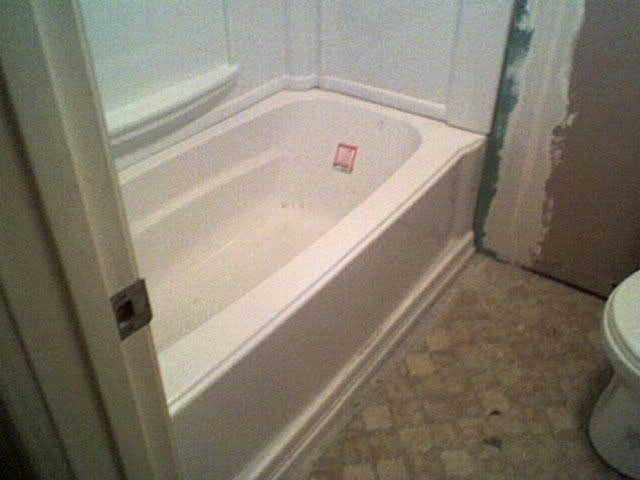I've asked questions about this project on John Bridge's forum but would like some input from you guys. Here's a little bit of the floor I'm concerned about.

This is about a 3' x 5' area of 20+ year old vinyl glued very firmly on concrete and appears to possibly be on top of SLC or a fairly thick layer of something. I would like to totally avoid having to get that vinyl up and am thinking seriously about putting something over it. Problem is that the tile will extend thru a door into a 4 x 8 area which at this time is a carpeted concrete floor in a powder room area. These floors need to be on the same level and there are no cracks to be concerned with. I am not at all convinced that this is a job that would require ditra. Hardibacker has been suggested. I just would like to know (1) How would YOU bring the floors to the same level. (2)How would you attach any underlayment you might suggest. (3) what kind of mortar that is sold at the big box stores would you choose?

This is about a 3' x 5' area of 20+ year old vinyl glued very firmly on concrete and appears to possibly be on top of SLC or a fairly thick layer of something. I would like to totally avoid having to get that vinyl up and am thinking seriously about putting something over it. Problem is that the tile will extend thru a door into a 4 x 8 area which at this time is a carpeted concrete floor in a powder room area. These floors need to be on the same level and there are no cracks to be concerned with. I am not at all convinced that this is a job that would require ditra. Hardibacker has been suggested. I just would like to know (1) How would YOU bring the floors to the same level. (2)How would you attach any underlayment you might suggest. (3) what kind of mortar that is sold at the big box stores would you choose?
Last edited by a moderator:
